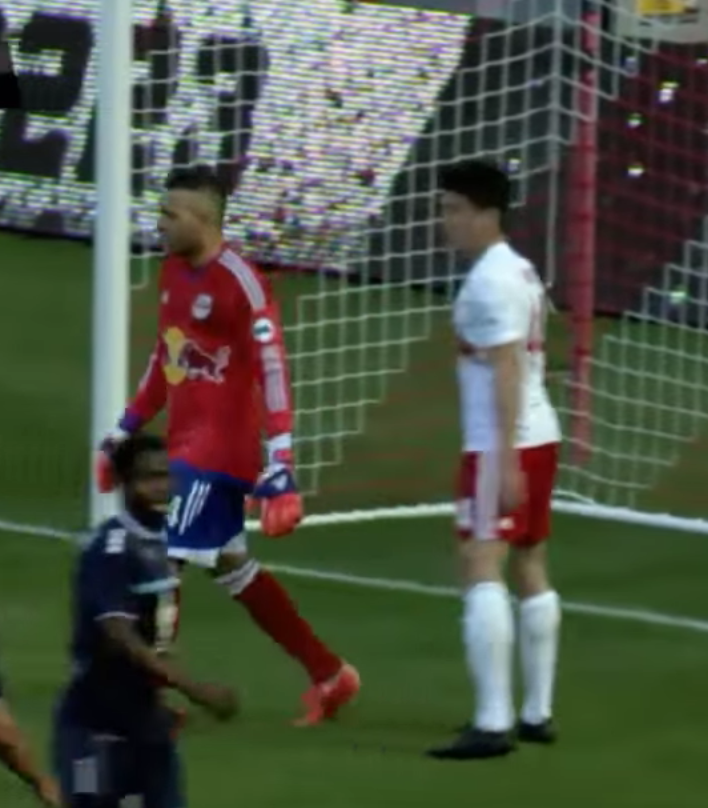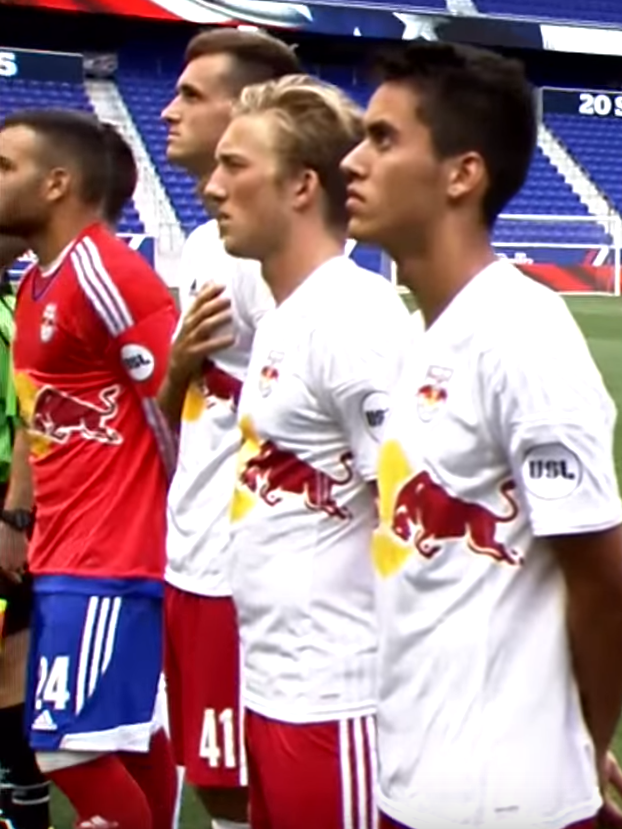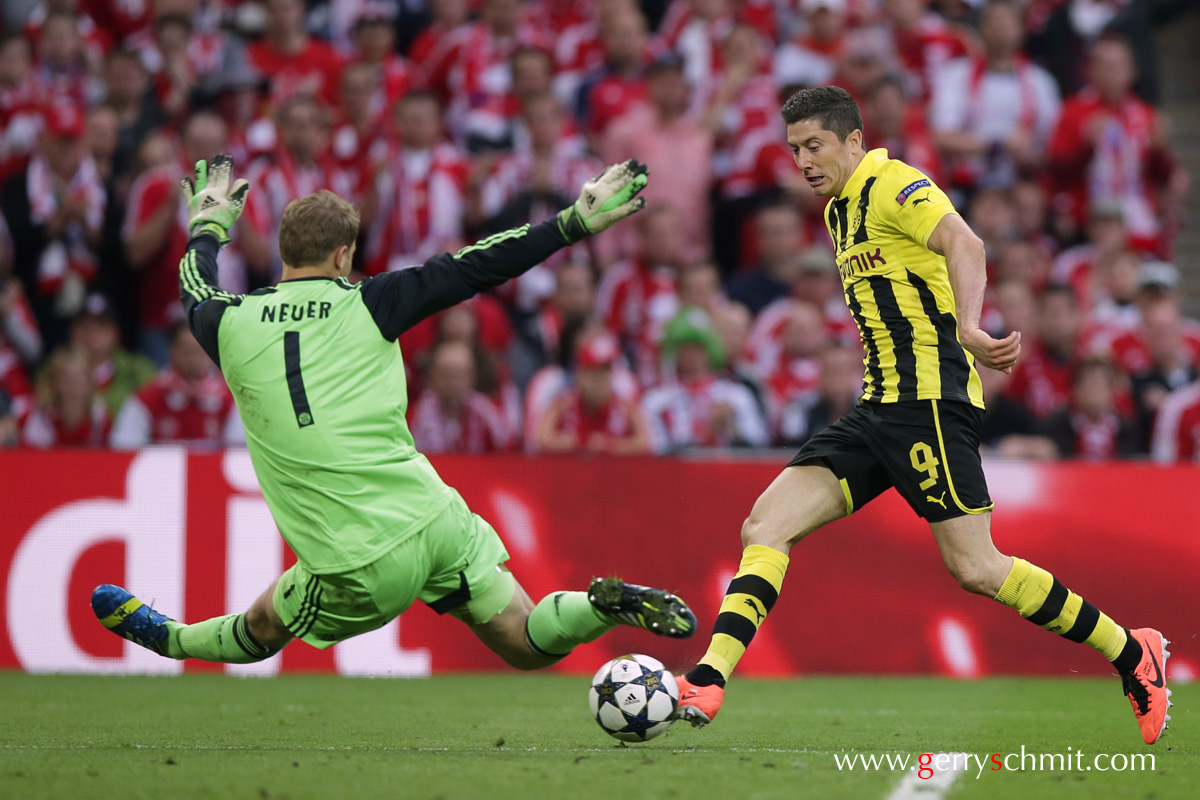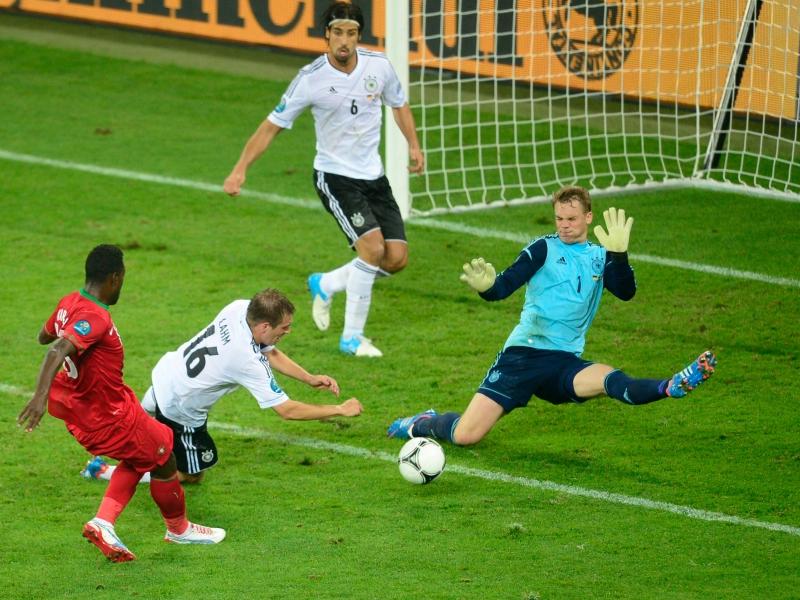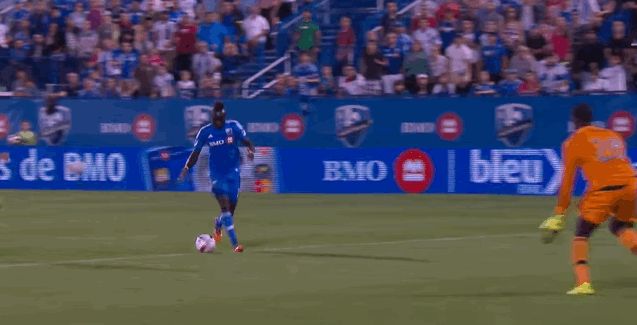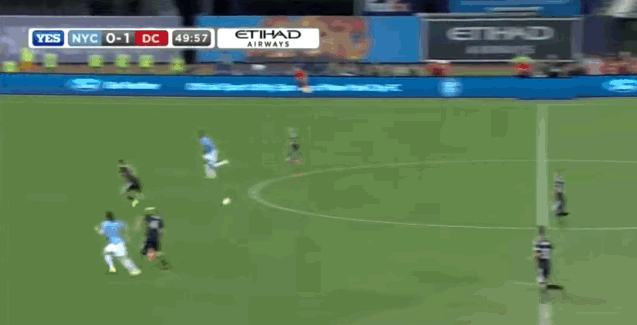It seems like every weekend we catch a goalkeeper getting scored on in a 1v1 situation only to hear the commentator describe the play as "nothing he could do". For most, a goalkeeper that saves a breakaway attempt has done the same as saving a penalty kick. However Gary Neville has a different standard for goalkeepers in 1v1s.
Video should start at 4:37
Neville's comments are from almost two years ago, so it's not exactly new information, not to mention he's citing goalkeepers that date back to the 1980s. While he does name the EPL's top goalkeepers of all-time when setting his standard for goalkeeping, he still makes an interesting point for goalkeepers: the advantage is on your side. Goalkeepers should be tell the strikers "you beat me" and not giving them an easy out.
When looking at MLS's "best saves", it's no secret that extension saves are valued so highly within the league. MLS lauds goalkeepers for their athleticism and ability for clawing saves out of the top corners. Unfortunately there is a shortage of appreciation for goalkeepers who compose themselves in 1v1s. What qualifies a "good" save in a 1v1 and what are some common mistakes? I don't have stats on 1v1 situations - and if someone does I'd be glad to list them here - but for the most part there are three problems we see with MLS goalkeepers in 1v1 situations.
Approach
There are several intricate details within a goalkeeper's approach (angle play, starting position, noticing striker tendencies, etc) but specifically we are covering a goalkeeper's strategy and ability to control the situation. The most common tactic for MLS goalkeepers is to rush out as fast as they can and slide through the ball before the striker can get a shot off. This aggressive strategy can work as it cuts down the angle and can even intimidate a striker but there are situations where patience and staying on their feet is the correct choice. Luis Robles made a fantastic save against Cyle Larin back in July.
Robles realizes he will not reach the ball before Larin, which is well outside the box. Robles uses negative movement - shuffling backwards towards his own goal - to control the the play for a few reasons. First, he gives himself room to go forward in his own box. If he sits a top of the box, he risks a handball outside the box. Second, the pressure is now on Larin, instead of Robles. Robles only has to get set and react. If Larin takes a big touch, the situation defuses. If Larin tries to round Robles, a defender likely spoils the attempt for Larin. Robles also helps himself on saving the possible chip (by being able to continue going backwards if Larin decides to try it) but also removes the likelihood of a chip, which is typically seen as a last ditch effort by a striker. If Robles rushes out or tries to cut down the angle here, he only hurts himself in this situation. He makes the correct decision and ends up with the save, something most MLS goalkeepers would struggle with doing.
Let's look at a time when rushing out wasn't the preferred choice.
Video should start at 0:20
Blake notices the obvious pass to Kaka, who is running into the middle of the 18, and tries to surprise Kaka by running out quickly. Kaka has his head originally turned away from goal and could be shocked by this if he was not Brazilian. Instead, Kaka takes a great turn on the ball. As Kaka notices Blake charging out, he starts to round him with his next touch. Blake throws on the brakes as quick as he can but ends up tripping Kaka and drawing the penalty. While you could argue that Kaka goes down easy, the problem from the goalkeeper's part is that Blake is out of control and hasn't assessed the situation correctly. There are three defenders in the area and Blake is by no means guaranteed the ball. For someone who is so good at extension saves, it would make sense for Blake to sit out of this one and try his hand with the shot from distance. If Blake shows a little more patience, he has a much greater chance of saving the shot.
Some more examples of this, if you're looking for them:
- Bill Hamid goes for a slide when he needs to stay up higher.
- Shep Messing describes Luis Robles' goal as "nothing he can do" as he hesitates to make a decision.
Timing
The second aspect of this is the reaction time of the goalkeeper. This is less about reflexes and more about being set, although both play a role. The previous point looking at the approach of a goalkeeper is centered around the mental game plan while this is referring to the physical preparation. Sometimes 1v1 saves incorporate both of these aspects. Sometimes only one, depending on the situation.
One of the easiest goalkeepers to beat is a moving goalkeeper. If they're carelessly charging forward or are just moving for moving's sake, there are a variety of options for a striker to put the ball in the back of the net. A good example of this can be found back in July, on Josh Saunders' first two conceded goals against New York Red Bulls. Highlights here or click on the pictures for a closer look.
On the first goal, Saunders is caught out of rhythm on the play. The shot is taken as he moves forward vertically, leaving him in the dust. While he is cutting down the angle by moving forward, he is doing so at the risk of not being able to break out horizontally, which is what the shot calls for. He never gets set and instead ends up flapping his limbs at a ball that really isn't that far from his body. As he is moving forward, he is alternating his weight on each step. This is fine as long as there is a final set position that evenly balances out his weight so he can step out or at least fall to one side. Instead, the shot is taken when Saunders is stepping forward with his left foot, which is why it ends up oddly in the air. If he limits his steps forward and gets set, he can make this save.
The second goal is not a 1v1 situation, but I wanted to highlight the problem of not being set or in rhythm with the shot. The header is taken about eight yards from goal but the screen shot is when Saunders finally gets his right foot planted. The ball is now 3-4 yards from goal and Saunders not only can't move in time, but is the recipient of the rarely seen dial up internet joke.
To be clear, there are times to sprint to attack the ball. If the striker is out of control or is close enough to goal, a goalkeeper needs to attack the ball. But there are also situations when a goalkeeper needs to stay on their feet. An incorrect, aggressive sprint at the ball causes two problems. First, the goalkeeper will put themselves in a bad situation that can lead to a penalty kick, a chip shot that easily trickles in, or to giving up a more favorable position in exchange for a less favorable. The movement needs to control the situation as much as possible, not result in conceding ground. Second, the excessive movement negates reactions and turns the goalkeeper into a moving wall. If the ball is not struck into it, the goalkeeper cannot extend out to make the save in time because he is moving so much.
Typically when a goalkeeper is moving too much, it is when he is running at the striker but goalkeepers can be moving too much laterally as well. The same principle applies that if a goalkeeper is moving too much to the side, he cannot get set for the shot. Frei falls victim of having too much lateral movement against Portland in July. He is crossing the goal mouth to get in the ideal spot for the shot, but he is so out of control that a skipped ball not far from the middle of the goal is unsaveable. If he controls his movement, he can cover both posts of goal more efficiently.
Body Shape
Goalkeeper guru Justin Bryant steps in to write about a goalkeeper's body shape to give us a historical perspective and observe the finer details of a proper slide. He writes the first three paragraphs while I provide an example to watch. Feel free to tweet at Justin with all your goalkeeper questions.
The common 1v1 goalkeeper tackle
Bill Hamid with the spread leg Spanish K approach
Goalkeeper body shape when dealing with 1v1 situations has undergone a dramatic evolution in the last decade-plus. A generation ago, most goalkeepers handled almost every 1v1 situation the same way: with a hands-first dive, in an attempt to smother, block, or claim the ball off the foot of an attacker. This can still be an effective technique when the attacker has taken a poor touch and the ball is there to be won; but when facing a composed opponent with the ball under control, it presents a very low barrier to the attacker, one which good players have little difficulty beating with a simple dink or chip. It also carries the significant risk of giving away a penalty if the goalkeeper fails to get a touch on the ball (although the recent change in the law means this is no longer an automatic sending-off). For me, the chief drawback is that it commits the goalkeeper to a single course of action, with no possibility to adjust, should the attacker take an extra touch or change direction.
In the 2000s, a generation of Spanish and Portuguese goalkeepers began popularizing a new way to handle 1v1s. The goalkeeper stays on their feet, advancing with small but fast steps, keeping the upper body upright while dropping the lower body close to the ground, with the hands in a blocking position to either side of the body. This technique, which originated in futsal, goes by various names, but I call it the Spanish K Barrier. Some call it the Starfish, but to me, this refers to the technique contrived by Peter Schmeichel when facing a point-blank shot: jumping and spreading all four limbs equally. This can be effective, too - Peter’s son Kasper does it well today, as does Joe Hart - but, again, it’s best used in point-blank shot situations, not when an attacker is advancing on goal with the ball under control.
The K Barrier’s two main advantages over the hands-first slide are that it presents a physically larger barrier to the attacker, and it gives the goalkeeper a chance to keep adjusting and improvising in the event the attacker tries to dribble, or the situation changes. By dropping the lower body but keeping the upper body upright, you take away the option of the easy chip/dink finish. A technique which keeps you on your feet also makes it far less likely you will give away a penalty, since there is no single ‘all or nothing’ moment of commitment, as there is with the hands-first slide. But it’s the ability to adjust, to improvise, and to ‘battle’ the attacker which makes makes me favor this technique. A goalkeeper who can use their feet to close space with the attacker, but keep enough distance between them to be an effective barrier and be able to react to a shot, all while remaining upright, is going to have an excellent success rate with 1v1s.
Bill Hamid and Steve Clark are MLS's largest proponents of the K Barrier. Here is Clark implementing the slide.
Clark does a wonderful job of avoiding any of the three common mistakes listed earlier. He reads the play well, seeing the striker is not going to hit it first time and will instead take a lengthy windup. Clark's movement is quick and in time with the shot. If the shooter is looking to round Clark or lay off, Clark can adjust as need be. The situation is lined up well for the goalkeeper to come straight at the ball and Clark makes the correct save on the play.
Conclusion
Most goals that are scored on a goalkeeper are ones they can do nothing about. They can be outnumbered in a counter, their defense can give up possession in a poor territory, a striker can make a phenomenal shot. The examples go on and on. But in the realm of breakaway situations, goalkeepers are actually empowered a great deal. It truly is a 1v1 and both sides have a their chance of executing their task. The goalkeeper actually has the benefit of not needing to make a save. They can force the shooter wide or stall out the play for added defenders. Every situation is different but for the most part, Gary Neville is right that elite goalkeepers should make more saves than concede goals. Tim Howard - USA's best 1v1 goalkeeper ever - was excellent at reading plays and knowing when to strike and when to hold his ground. It was not happenstance he reached this point. He simply was very intentional in beating the striker in the scenario.
“I’ve got quite a simple theory on 1-on-1s, a goalkeeper should save seven or eight out of ten. The idea that every 1-on-1 that goes in the back of your net... we never hear someone say “it’s a goalkeeper error.” We always say “defenders let him run.” Oh course it’s a goalkeeping error, her should save the majority of them. The best goalkeepers, Schmeichel, van der Sar, Seaman, Neuer, save the majority of their 1-on-1s.”
MLS goalkeepers, fans, and media alike are far too comfortable defaulting a 1v1 to the striker's favor. There are several factors that are in play that a goalkeeper can do to help his situation. A number of goals are too soft for goalkeepers, despite having no defenders in the surrounding area. Yes, breakaways are not ideal and the blame mostly goes to a defensive lapse, but a main component of a goalkeeper's job is being prepared in these scenarios. If the goalkeeper - or fan, or writer - is simply hoping the play just happens to work out in the goalkeeper's favor, they are not giving the goalkeeper enough responsibility for the outcome.




